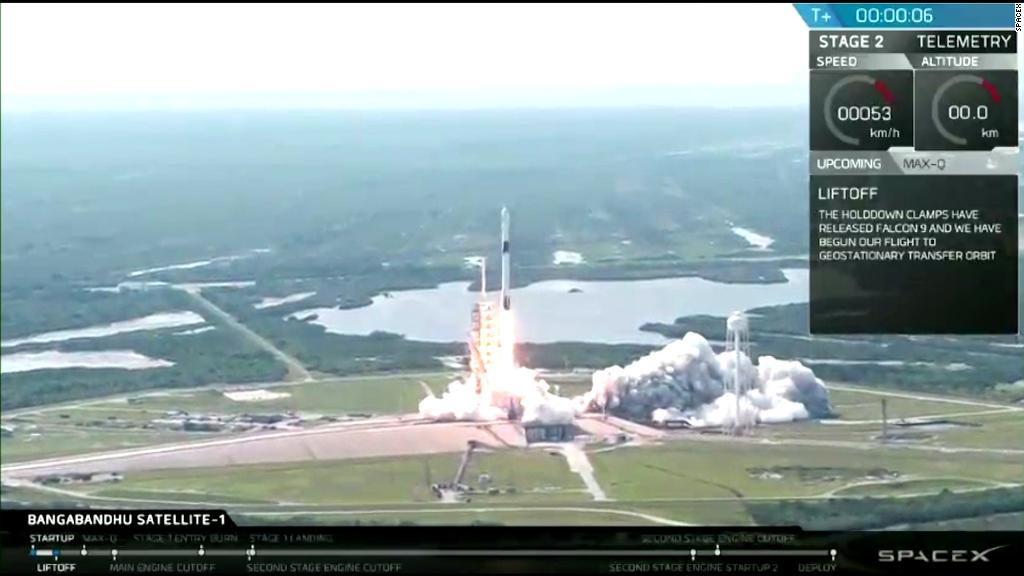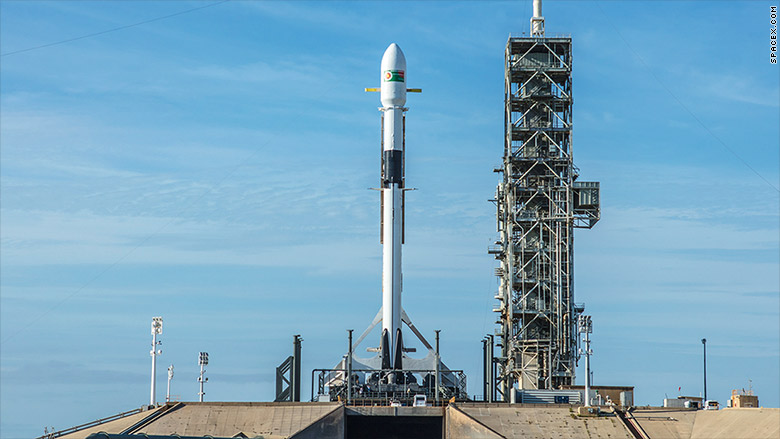
A new version of SpaceX's Falcon 9 rocket that could eventually take astronauts to space took flight for the first time Friday.
Liftoff occurred around 4:14 pm ET out of Kennedy Space Center in Florida -- a day later than originally planned. The Falcon 9 Block 5 rocket, as the latest version is called, carried the Bangabandhu Satellite-1 into orbit. The satellite will provide TV, internet and other telecom services to Bangladesh and the surrounding region.
After launch, the first-stage booster of the rocket detached and guided itself back to Earth, where it landed safely on a platform in the ocean so it can be flown once again on a future mission.
SpaceX has landed and reflown boosters many times before. But in the eight-year history of flying Falcon 9 rockets, SpaceX has only ever sent the same rocket to space twice.
Related: SpaceX to build Mars rocket at the Port of Los Angeles
The company says the Block 5 variant can be re-flown as many as 10 times and can be easily refurbished between launches, which would drastically reduce the cost of a single launch.
This trip, of course, did not carry astronauts. Though the Falcon 9 Block 5 was designed with human spaceflight in mind, NASA will require seven successful flights of the Block 5, with no significant changes to the rocket's configuration, before allowing humans on board.

The United States has not flown humans to space since 2011. That was the final year of NASA's Space Shuttle program.
Since then, the US government has been forced to rely on Russia to get astronauts to and from the International Space Station.
So, in 2014, NASA tapped SpaceX and Boeing (BA) to develop human-rated rockets and capsules that can ferry astronauts to the orbiting laboratory.
According to NASA's current estimates, Boeing could conduct its first crewed test flight in November, and SpaceX
Related: Elon Musk says Mars rocket will fly 'short flights' next year
The Block 5 variation of SpaceX's Falcon 9 rocket will be the last major upgrade the company's workhorse rocket. In total, Falcon 9 rockets have made more than 50 trips to space over the past eight years.
After the inaugural launch of the Falcon Heavy launch vehicle in February, SpaceX CEO Elon Musk said the company will soon focus all of its engineering talent on building its Mars rocket, called BFR.
SpaceX has no plans to use its Falcon Heavy, currently the most powerful rocket in operation, to fly humans. But the monstrous rocket is slated to put a couple hefty satellites into orbit in the near future, according to the company's launch manifest.

